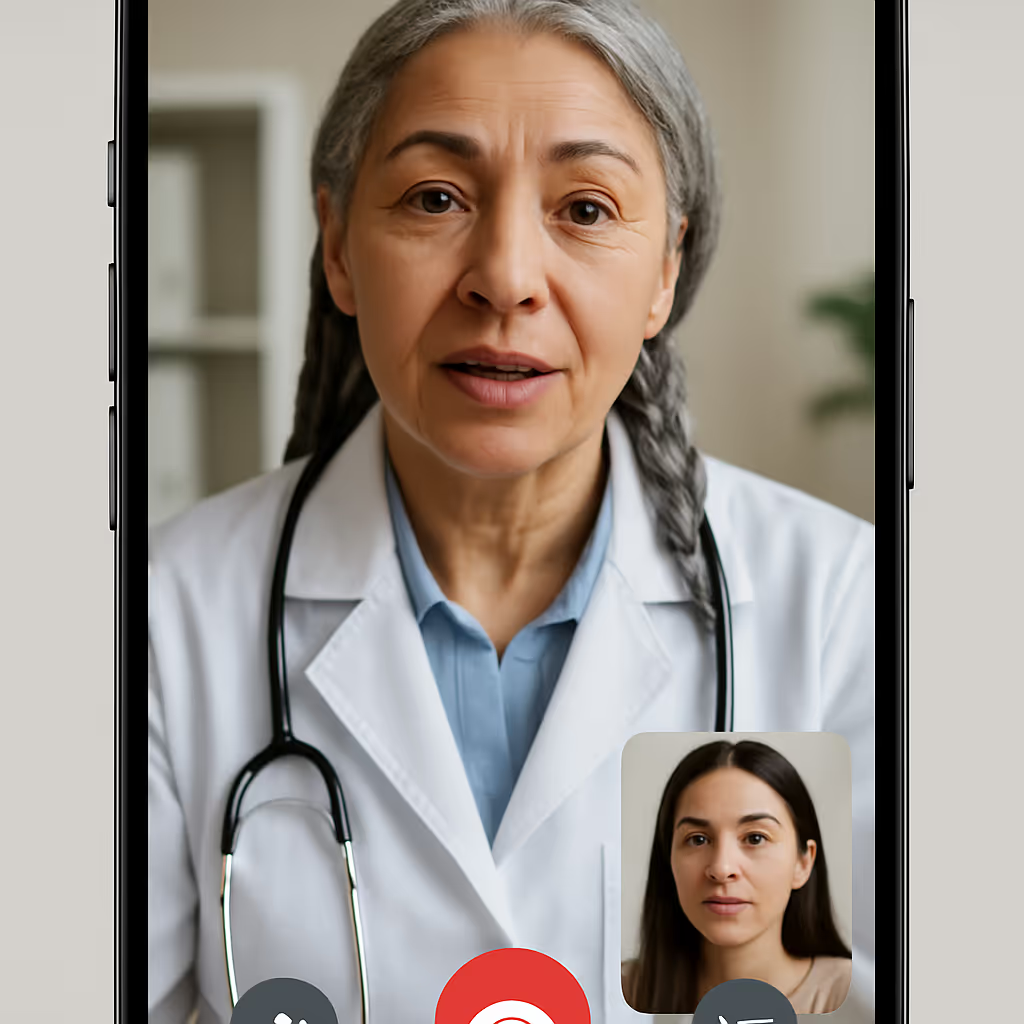Hypothyroid Weight Gain — Restart Your Metabolism Online
Estimated wait time: 5 minutes or less

Why Does Hypothyroidism Cause Weight Gain?
When your thyroid under‑produces T4 and T3 hormones, your basal metabolic rate drops. That means you burn fewer calories at rest, retain water, and often feel fatigued— a perfect storm for weight gain even on a normal diet.

How We Diagnose & Treat Hypothyroidism Online
Medical weight loss is a physician‑supervised program that combines evidence‑based medications
(GLP‑1s, appetite suppressants), nutrition coaching, and ongoing lab monitoring to achieve
sustainable weight reduction and metabolic health—without crash diets or invasive surgery.
Video Intake
- Discuss symptoms (cold intolerance, hair loss, brain fog) and current meds.
Thyroid & Metabolic Labs
Dose Optimization
We use algorithm‑driven dosing to hit a TSH target of 0.5‑2.5 mIU/L for most adults.</li>
Weight‑Loss Adjuncts
GLP‑1s can boost fat loss while the thyroid dose is stabilizing.
90‑Day Follow‑Up
Repeat labs, titrate medication, and adjust calories or add-ons like selenium/vitamin D.
Effective online treatment for weight loss
HLTHi connects you with licensed providers who prescribe FDA‑approved or 503A‑compounded
medications and deliver ongoing coaching—entirely online.
Pick up your prescription at your
local pharmacy or have it shipped discreetly to your door.
Once Daily
Dissolves under the tongue; mimics GLP‑1 hormone to reduce appetite and slow gastric emptying
Once daily
Tablet absorbed in the stomach; same active ingredient as Wegovy® injections.
Weekly
DualGIP/GLP‑1 agonist for enhanced glucose control and weight loss.
Once Daily
Appetite suppressant + craving control.
Once or twice daily
Improves insulin sensitivity, especially in PCOS or pre‑diabetes
How Online Medical Weight Loss Treatment Works
From your first click to ongoing follow‑ups, the entire process is handled through our HIPAA‑secure platform. No waiting rooms, no unnecessary appointments just evidence‑based care delivered to your schedule.
Step 1.

Step 2.
Step 3.
Need new labs? We e‑order a panel through Quest Diagnostics; average turnaround is 24‑48 hours.
Step 4.
Step 5.
Common questions you may have about thyroid & weight loss
Can I manage my thyroid completely online?
Yes. Intake, dose adjustments, refill requests and GLP‑1 add‑ons all happen through our secure platform. Only blood draws require a local lab visit.
I’m already on levothyroxine—can I switch?
Absolutely. Provide your current dose and last two TSH results; we’ll take over management and ship refills or e‑scribe to your pharmacy.
Do you treat Hashimoto’s specifically?
Yes. Hashimoto’s is the most common cause of hypothyroidism; our regimen includes antibody monitoring and anti‑inflammatory diet coaching.
Can I combine GLP‑1s with thyroid meds?
Yes, they are safe together. Your provider will stagger titration to minimize GI side‑effects and avoid over‑suppression of TSH.
How much weight can I realistically lose and how fast?
Clinically significant weight loss is defined as ≥5 % of baseline body weight, which meaningfully lowers blood pressure, A1C and triglycerides. In trials, GLP‑1s such as semaglutide produce average losses of 10‑15 % over 12‑16 months, while phentermine/topiramate averages 7‑10 %.
Most HLTHi patients report 1‑3 lbs per week during the active titration phase, slowing to 0.5‑1 lb with dose stabilization as the body reaches a new set point. We stress that medications are tools, not magic bullets: maximal results require a 300‑500 kcal daily deficit and at least 150 minutes of weekly moderate exercise.
Our app logs nutrition and weight, flagging stalls so your provider can adjust doses or add adjuncts (e.g., metformin for insulin resistance). Long‑term maintenance often means staying on a reduced “maintenance dose” or cycling therapy 3‑4 times per year.
Am I eligible for prescription weight-loss medication?
If labs are outdated (>6 months), we’ll order new ones (A1C, CMP, TSH, lipid panel) through a partnered national lab you can visit locally. Contraindications include personal/family medullary thyroid carcinoma, MEN2, severe GI disease, uncontrolled psychiatric illness, pregnancy or breastfeeding. Patients with a history of substance misuse may be ineligible for stimulant‑based suppressants like phentermine but can still qualify for GLP‑1s.
If you don’t meet criteria, we’ll recommend evidence‑based lifestyle coaching or refer to an in‑person specialist.
How does sublingual semaglutide work for weight loss?
Sublingual semaglutide is a GLP‑1 receptor agonist formulated to dissolve under the tongue, bypassing the GI tract’s first‑pass metabolism that can diminish tablet potency.
Once absorbed, it mimics the natural hormone GLP‑1 released after you eat, triggering three weight‑friendly actions:
(1) slower gastric emptying—you feel full longer;
(2) reduced hunger signals in the hypothalamus;
(3) improved insulin sensitivity, which curbs fat storage.
Clinical data on injectable semaglutide shows average losses of 15 % of body weight at 68 weeks; early pilot studies on sublingual forms suggest similar pharmacokinetics when properly compounded, though large phase‑3 trials are ongoing. Most patients notice appetite reduction in week 1‑2, with measurable weight loss by week 4‑6 when paired with a modest calorie deficit.
Common side‑effects (nausea, mild reflux) usually fade in two weeks and can be minimized by starting at a low micro‑dose and titrating every 4 weeks under provider supervision. Because sublingual semaglutide is compounded, it’s not yet FDA‑approved; we work only with 503A/503B‑certified pharmacies to ensure sterility and potency.
.svg)

